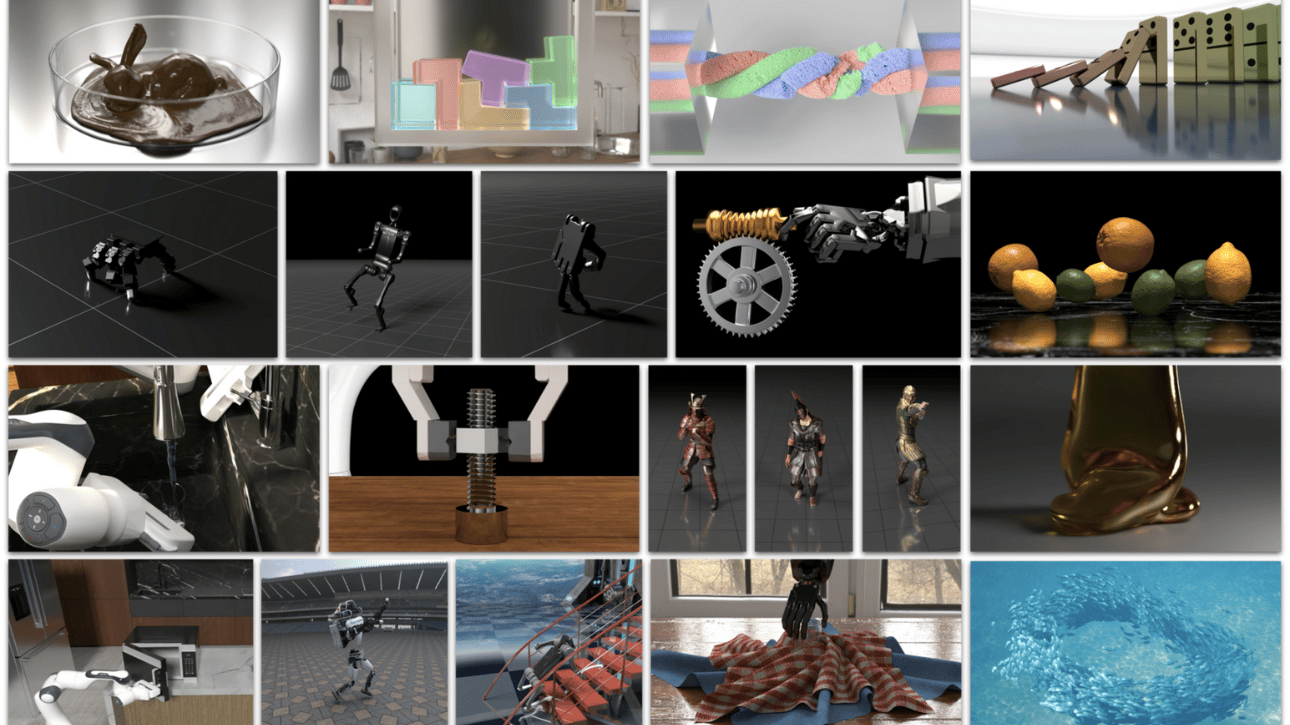- The Logical Box
- Posts
- MIT engineers stack 3D chips to new heights
MIT engineers stack 3D chips to new heights
PLUS: Genesis-World: AI-powered 3D world generation

IMPORTANT UPDATE:
As we step into 2025, I'm excited to announce a strategic evolution of this newsletter that will deliver even more value to you. While this marks the conclusion of our general AI news coverage, we are shifting to provide something far more crucial: practical, AI training insights that directly address the challenges you face in implementing AI solutions within your business.
Through my work at Keen Alliance, I've heard your concerns about feeling overwhelmed by AI's complexity and the uncertainty of where to begin. This renewed focus will deliver clear, jargon-free guidance, actionable strategies, and industry-specific examples.
I believe this focused approach will provide you with the concrete tools and confidence you need to make AI work for your business, without getting lost in technical complexity or costly trial-and-error.
Hello, AI Explorer! Welcome to The Logical Box
MIT researchers have developed a method to stack and connect 3D computer chips vertically, potentially revolutionizing chip design and performance.
Let’s get into it…
Let’s Take a Peek Inside the Box for Today’s Issue:
MIT engineers stack 3D chips to new heights
Genesis-World: AI-powered 3D world generation
Google Search to introduce AI Mode powered by Gemini
AI with human-like traits faces more blame for moral failures
AI Tip of the Week: Simplify Your Client Communication with AI
Read time: 6 minutes

Image Source: MIT
Think Inside the Box:
MIT researchers have developed a method to stack and connect 3D computer chips vertically, potentially revolutionizing chip design and performance.
Unpacking the Logic:
The new technique allows for stacking chips up to 12 layers high, surpassing previous limits of 2-4 layers.
This vertical stacking method could lead to chips that are 3-5 times faster while using less energy.
The process involves growing semiconducting material directly onto existing chips, rather than bonding separate chips together.
Researchers used a low-temperature process to grow indium gallium arsenide, a material with superior electron mobility compared to silicon.
This approach could enable the integration of different types of semiconductors, such as those used for processing and memory, into a single chip.
The Logical Impact:
Logically speaking, this breakthrough in 3D chip stacking has the potential to significantly impact computing power and efficiency across industries. How might your business leverage these advancements in chip technology to enhance your products or services in the near future?

Image source: Genesis
Think Inside the Box:
Genesis-World, an open-source framework for creating and simulating 3D worlds using large language models (LLMs) and neural fields.
Unpacking the Logic:
Genesis-World allows users to generate 3D environments from text descriptions or 2D images.
The framework uses LLMs to interpret user prompts and generate scene graphs.
Neural fields are employed to create 3D representations of objects and scenes.
Genesis-World supports various rendering techniques, including neural rendering and rasterization.
The platform enables dynamic interactions within the generated worlds, such as object manipulation and physics simulations.
The Logical Impact:
From a practical standpoint, Genesis-World opens up new possibilities for rapid prototyping and content creation in 3D environments. How can your business leverage this AI-powered world generation tool to enhance product development, customer experiences, or training simulations?

Image source: The Verge
Think Inside the Box:
Google is reportedly developing an "AI Mode" for its search engine, integrating a Gemini-like chatbot interface to enhance user search experiences.
Unpacking the Logic:
The new AI Mode will be accessible through a toggle switch in Google Search.
This feature aims to provide more detailed and conversational responses to user queries.
The AI Mode interface is expected to resemble Google's Gemini chatbot.
Google's move follows Microsoft's integration of ChatGPT-like features into Bing.
The company is also exploring ways to incorporate generative AI into standard search results.
The Logical Impact:
From a practical standpoint, Google's AI Mode could significantly alter how users interact with search engines. How might this development impact your business's digital marketing strategies and online presence optimization?

Image source: Leonardo AI / Andrew Keener
Think Inside the Box:
A new study reveals that artificial intelligences perceived as having human-like minds are more likely to be blamed for moral transgressions, raising ethical concerns about AI accountability and scapegoating.
Unpacking the Logic:
Participants in the study assigned greater blame to AIs when they perceived them as having human-like qualities, such as awareness, thinking, and planning.
Experiments included scenarios like racist auto-tagging by AI, where participants evaluated blame for the AI, its programmer, the company, or the government.
When AIs were described with human-like traits (e.g., name, age, hobbies), participants attributed more blame to the AI and less to the company involved.
However, when participants rated blame independently for each party, the company’s blame level did not decrease despite increased AI blame.
The findings highlight concerns about using AIs as scapegoats, potentially diverting accountability from human stakeholders or organizations.
The Logical Impact:
Logically speaking, these results emphasize the ethical implications of designing AIs with human-like traits. How can businesses ensure fair accountability in AI-related decisions while avoiding misuse of AI as a scapegoat for organizational failures?
AI TIP OF THE WEEK
AI TIP OF THE WEEK
Simplify Your Client Communication with AI
Managing client communication can feel overwhelming, especially for service-based businesses.
AI can streamline interactions, ensuring timely, personalized, and professional responses that keep your clients happy.
How AI Can Help You:
• Automate appointment confirmations, reminders, and follow-ups.
• Draft and personalize client emails quickly.
• Provide instant responses to common questions with AI chatbots.
Easy Steps to Get Started:
Select a Tool: Try tools like HubSpot (CRM with AI-powered email), Drift (AI chatbots), or Calendly (AI scheduling assistant).
Set Up Automation: Use AI to send appointment reminders, follow-ups, or updates without manual effort.
Create Email Templates: Leverage AI to draft personalized email responses based on your client’s preferences.
Enhance Availability: Use AI chatbots to handle FAQs and route complex inquiries to your team.
Monitor & Adjust: Use AI analytics to track response times and client satisfaction, refining processes as needed.
Why It’s Useful:
AI simplifies client communication, helping you:
• Save time on repetitive tasks like scheduling and reminders.
• Deliver a more personalized, timely experience for your clients.
• Focus on building relationships rather than administrative work.
Tools to Try:
• HubSpot: Offers AI-driven email drafting and client management.
• Drift: Provides conversational AI chatbots for client interactions.
• Calendly: Automates scheduling and follow-ups with ease.
With AI-enhanced communication, you’ll provide better client experiences while freeing up time for growth-focused activities.
Please share The Logical Box link if you know anyone else who would enjoy!